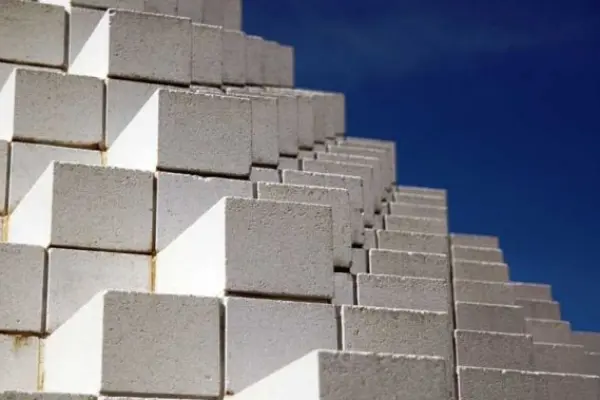In 2025, cellular concrete remains one of the most sought-after wall materials in low-rise construction. According to the International Association of Building Materials, over 40% of new private homes in Europe are built using AAC (Autoclaved Aerated Concrete) or non-autoclaved cellular concrete, with an average material cost starting from $120 per cubic meter. It's no coincidence that this lightweight concrete, which absorbs innovations like a sponge, has gained such popularity in modern construction. Frankly speaking, few building materials can match cellular concrete in terms of combined technical characteristics and affordability.
Cellular concrete is a type of lightweight concrete with a porous structure. It contains air voids that occupy up to 85% of its volume. These voids give the material unique properties. The walls can "breathe" as a result. Excellent thermal insulation is provided.
Types of Cellular Concrete and Their Features in Construction
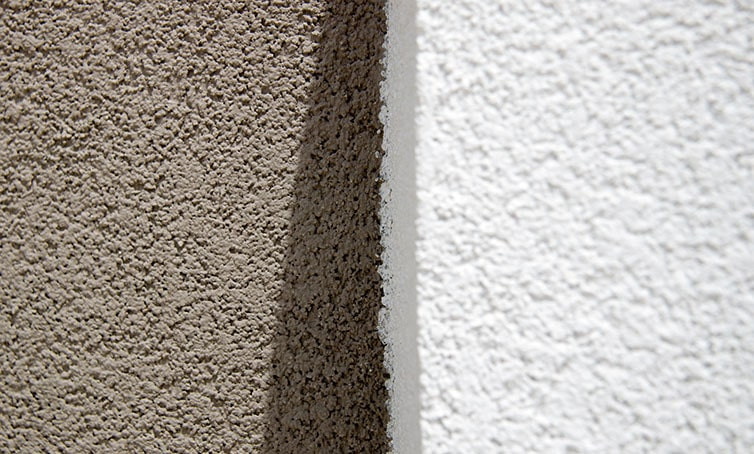 There are several main types of cellular concrete, each with its own advantages when used in modern construction. On construction sites in Toronto, I noticed that autoclaved aerated concrete and non-autoclaved cellular concrete are used for different purposes, depending on the structural requirements. Everything depends on the specific project.
There are several main types of cellular concrete, each with its own advantages when used in modern construction. On construction sites in Toronto, I noticed that autoclaved aerated concrete and non-autoclaved cellular concrete are used for different purposes, depending on the structural requirements. Everything depends on the specific project.
Using the right type of cellular concrete is the key to building durability and reliability. For load-bearing walls, it's preferable to use autoclaved aerated concrete with a density of D400-D500, which provides the necessary strength while maintaining good thermal insulation properties. For interior partitions and thermal insulation structures, a lighter material with a density of D200-D300, offering better insulation qualities, is suitable.
The main types of cellular concrete:
- AAC (Autoclaved Aerated Concrete) – produced by adding a gas-forming agent (usually aluminum powder) to the concrete mix, which reacts with lime to release hydrogen, forming pores.
- Foam concrete – manufactured using a foaming agent that creates a stable system of air bubbles in the cement mortar.
- Autoclaved cellular concrete – cures in special autoclaves under high pressure and temperature, giving it increased strength.
- Non-autoclaved cellular concrete – sets under natural conditions, is more accessible in production, but inferior in strength to autoclaved concrete.
The choice of cellular concrete type depends on the specific construction tasks and climatic conditions of the region. Wall materials made of autoclaved aerated concrete are ideal for regions with harsh winters due to their high strength and thermal insulation properties. Have you ever wondered why this material is so popular in Scandinavian countries? It's all about its energy efficiency and environmental friendliness.
Production Technology and Physical-Mechanical Properties of Cellular Concrete
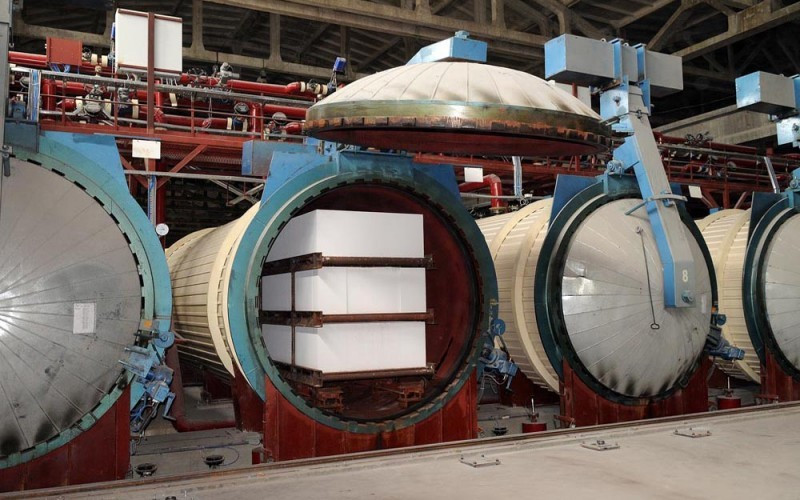 The production technology of cellular concrete affects its final characteristics. It's not always obvious. But critically important. The method of curing determines the strength, frost resistance, and other parameters of the material, regulated by standards such as ASTM C1693 for AAC and EN 771-4 for European markets.
The production technology of cellular concrete affects its final characteristics. It's not always obvious. But critically important. The method of curing determines the strength, frost resistance, and other parameters of the material, regulated by standards such as ASTM C1693 for AAC and EN 771-4 for European markets.
Before considering the physical and mechanical properties of various types of cellular concrete, it's important to understand their direct connection with the production method and raw material composition. From my experience working with different manufacturers, even minor deviations in the technological process can significantly affect the quality of the final product. Modern manufacturers strictly control all parameters of the technological process to ensure consistent quality of cellular concrete wall materials.
| Parameter | Autoclaved AAC | Non-autoclaved AAC | Foam Concrete |
|---|---|---|---|
| Density (kg/m³) | 400-700 | 500-900 | 300-1200 |
| Compressive Strength (MPa) | 2.5-5.0 | 1.5-3.5 | 0.5-3.0 |
| Thermal Conductivity (W/m·°C) | 0.09-0.18 | 0.14-0.22 | 0.08-0.38 |
| Freeze-Thaw Resistance (cycles) | 35-100 | 15-50 | 15-75 |
| Drying Shrinkage (%) | 0.02-0.04 | 0.1-0.3 | 0.1-0.4 |
| Water Absorption (%) | 20-30 | 30-40 | 14-60 |
The table above clearly demonstrates the differences between the main types of cellular concrete. Autoclaving significantly improves material characteristics, especially in terms of strength and frost resistance, making autoclaved aerated concrete preferable for load-bearing structures. When choosing a material for a specific project, one should consider these indicators, taking into account the climatic conditions of the construction region and energy-efficient building requirements.
The production of cellular concrete includes several stages, which are described in detail in the study Manufacturing processes of cellular concrete products for the construction (MATEC Web of Conferences, 2017):
- Preparation of raw components (Type I/II Portland cement, silica sand with a fineness modulus of 1.2-2.2, lime with at least 70% activity, water).
- Mixing components in specific proportions (for AAC with density 500 kg/m³: cement - 25%, sand - 45%, lime - 10%, gypsum - 5%, water - 15%).
- Adding a pore-forming agent (for AAC – aluminum powder 0.08-0.12% of the dry components' mass, for foam concrete – foaming agent 1.5-2.5%).
- Pouring into molds and letting the mass expand (mixture temperature 40-45°C, expansion time 30-40 minutes).
- Curing (in an autoclave at a pressure of 12-14 bar and temperature of 190-200°C for 8-12 hours, or under natural conditions at a temperature not below 15°C for 24-72 hours).
- Cutting into blocks of the required size with permissible deviations not exceeding ±1 mm in length and width and ±2 mm in height.
Energy-Efficient Construction Using Cellular Concrete
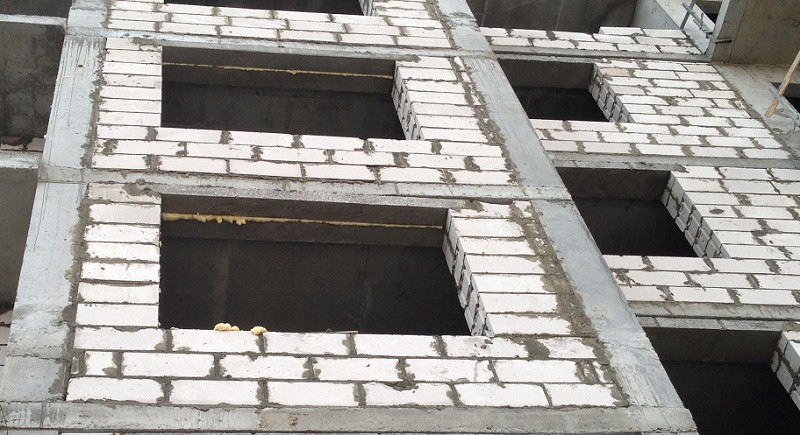 Last season, I encountered the design of an energy-efficient house in the suburbs. That's when I became fully convinced of the advantages of cellular concrete for modern construction. The low thermal conductivity of this material is a key factor for creating energy-saving buildings.
Last season, I encountered the design of an energy-efficient house in the suburbs. That's when I became fully convinced of the advantages of cellular concrete for modern construction. The low thermal conductivity of this material is a key factor for creating energy-saving buildings.
The use of cellular concrete in energy-efficient construction can significantly reduce heating and air conditioning costs. The porous structure of the material, resembling natural honeycombs, provides high thermal resistance of the walls. And the absence of thermal bridges due to the material's homogeneity and precise geometric dimensions of the blocks allows for creating an effective thermal insulation envelope for the building.
Success story: "When we built our suburban house using autoclaved AAC in 2022, many neighbors were skeptical about this choice. But after just a year, the difference became obvious – our heating costs were 35% lower than those of neighbors with brick houses of similar area. The house retains heat excellently in winter and coolness in summer. It's especially pleasant that the rooms constantly maintain a comfortable microclimate with optimal humidity. We also saved on foundation construction, as AAC is approximately three times lighter than brick. After three years of use, not a single crack has appeared!"
Modern construction increasingly focuses on principles of environmental friendliness and energy efficiency. An eco-house made of cellular concrete, like a shady garden on a hot day, creates a comfortable atmosphere with minimal energy consumption. The "breathing" walls of this material contribute to the natural regulation of humidity in the room, preventing the appearance of mold and fungus.
The application of energy-saving technologies combined with cellular concrete allows achieving energy efficiency class A and A+ according to European standards. This means that annual energy consumption for heating can be less than 50 kWh/m² per year. For comparison, in ordinary brick houses, this figure reaches 150-200 kWh/m² per year.
Economic Advantages of Cellular Concrete Construction
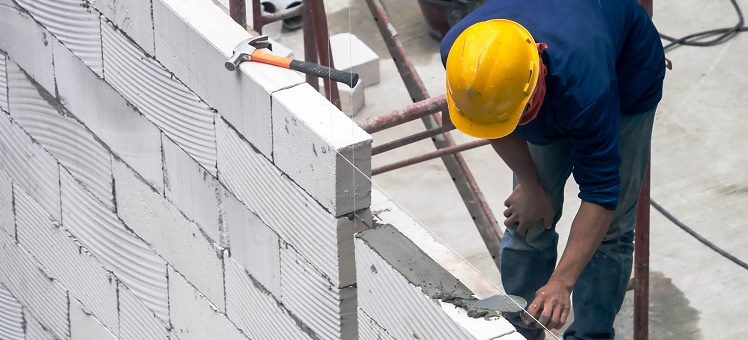 The economic benefit of cellular concrete construction is formed at several levels. First of all, it's the reduction in construction costs themselves. By the way, according to construction companies, labor costs when erecting walls from AAC blocks are 30-40% lower than with brick masonry, which significantly increases the project's profitability.
The economic benefit of cellular concrete construction is formed at several levels. First of all, it's the reduction in construction costs themselves. By the way, according to construction companies, labor costs when erecting walls from AAC blocks are 30-40% lower than with brick masonry, which significantly increases the project's profitability.
During a visit to a construction exhibition in Warsaw, I was surprised at how quickly a team of three people erected a demonstration wall of AAC blocks. The work took less than an hour. Time savings in cellular concrete construction is a weighty argument for choosing this material.
Main economic advantages:
- Reduced load on the foundation due to the low weight of the material (3-4 times lighter than brick), saving up to 20% on foundation work.
- Shortened construction time by 25-30% due to the larger block sizes and ease of installation.
- Reduced masonry mortar consumption by 70% due to precise geometric dimensions of the blocks.
- Savings on heating throughout the building's service life (up to 40% annually).
- Payback period for additional costs of quality AAC compared to brick is 3-5 years due to heating savings.
According to experts, the total savings in the construction of a house from cellular concrete compared to traditional materials can reach 20-25%. The cost of a cubic yard of quality autoclaved AAC ranges from $100 to $150, making it accessible to a wide range of developers. The price per cubic yard of non-autoclaved cellular concrete is even lower – from $80 to $120, but its lower physical and mechanical characteristics must be taken into account.
Practical Aspects of Working with Cellular Concrete
Working with cellular concrete has its own peculiarities, but in general, it's characterized by simplicity and accessibility even for non-professional builders. Ease of processing is one of the main advantages of this material. According to technological charts and manufacturers' recommendations, certain rules for installation and processing must be followed to achieve a quality result.
Cellular concrete can be easily sawed with an ordinary handsaw with carbide-tipped blades, drilled (only in non-impact mode), and notched without much effort. This allows creating complex architectural elements and laying engineering communications without special equipment. It's important to consider that significant dust is released during processing, so it's recommended to use a respirator and protective glasses.
| Type of Work | Recommended Tool | Usage Features |
|---|---|---|
| Block Cutting | Hand saw with carbide tips, electric band saw | Cut at right angle, use a guide, cutting speed 30-40 cm/min |
| Block Laying | Toothed trowel (tooth size 4-8 mm), rubber mallet (500-800 g) | Apply adhesive in an even layer 2-3 mm, adhesive consumption 25-30 kg/m³ of masonry |
| Grooving | Manual wall chaser, electric wall chaser with speed control | Work at low speeds (1000-1500 rpm), avoid excessive pressure |
| Drilling | Spiral concrete drill bit Ø 6-12 mm, core drill Ø 40-120 mm | Use non-impact mode, rotation speed 400-800 rpm |
| Plastering | Notched trowel with tooth height 8-10 mm, plastering float | Prime the surface beforehand, apply plaster with a thickness of 5-8 mm |
The table above contains basic recommendations for selecting tools for working with cellular concrete. The right selection of tools significantly simplifies the construction process and improves the quality of the result. When performing the work, one should consider the requirements of the International Building Code (IBC) and instructions from AAC block manufacturers.
When laying cellular concrete blocks, a special adhesive mortar should be used, which provides a thin joint (2-3 mm) and prevents the formation of thermal bridges. Before starting work, it's necessary to clean the surface of the blocks from dust and, if necessary, level the first row using a cement-sand mortar. For better adhesion, the block surface can be treated with a deep penetration primer. At air temperatures above 25°C, it's recommended to slightly moisten the blocks before laying to prevent rapid drying of the adhesive.
Environmental Friendliness and Impact on Indoor Microclimate
Cellular concrete, like a fresh breeze on a hot day, creates a special atmosphere in the house thanks to its unique properties. The material's environmental friendliness is due to its natural composition and absence of harmful additives. According to standards like LEED and BREEAM, cellular concrete is classified as an environmentally safe building material.
The main components of cellular concrete – sand, cement, lime, and water – are absolutely safe for humans. According to World Health Organization studies, AAC has a radiation safety level of class A, making it suitable for the construction of any buildings, including childcare and medical facilities. Unlike some other building materials, cellular concrete does not release harmful substances during use, which is especially important for people with allergies and respiratory diseases.
The special structure of autoclaved aerated concrete provides high vapor permeability of walls (coefficient 0.15-0.23 mg/(m·h·Pa)), allowing them to "breathe." Thanks to this, an optimal humidity level of 40-60% is maintained in the rooms, condensation formation is prevented, and a comfortable microclimate is created in the house. According to research by the European Institute of Building Materials, buildings made of cellular concrete provide a 15-20% more stable level of air humidity in rooms compared to reinforced concrete structures.
Several important facts about environmental friendliness and microclimate:
- Cellular concrete has a neutral pH (6.5-7.5), which excludes the release of alkalis into the room air.
- The lightweight building stone does not support the development of microorganisms and mold due to its mineral composition.
- The air permeability of AAC (1.7-2.2 perm·in) contributes to the natural ventilation of rooms, reducing CO₂ concentration by 10-15%.
- Due to its porous structure, the material effectively absorbs noise, reducing sound levels by 43-48 dB with a wall thickness of 8 inches.
- Cellular concrete does not emit volatile organic compounds (VOCs), which are often present in synthetic building materials.
Durability and Performance Characteristics of Cellular Concrete Structures
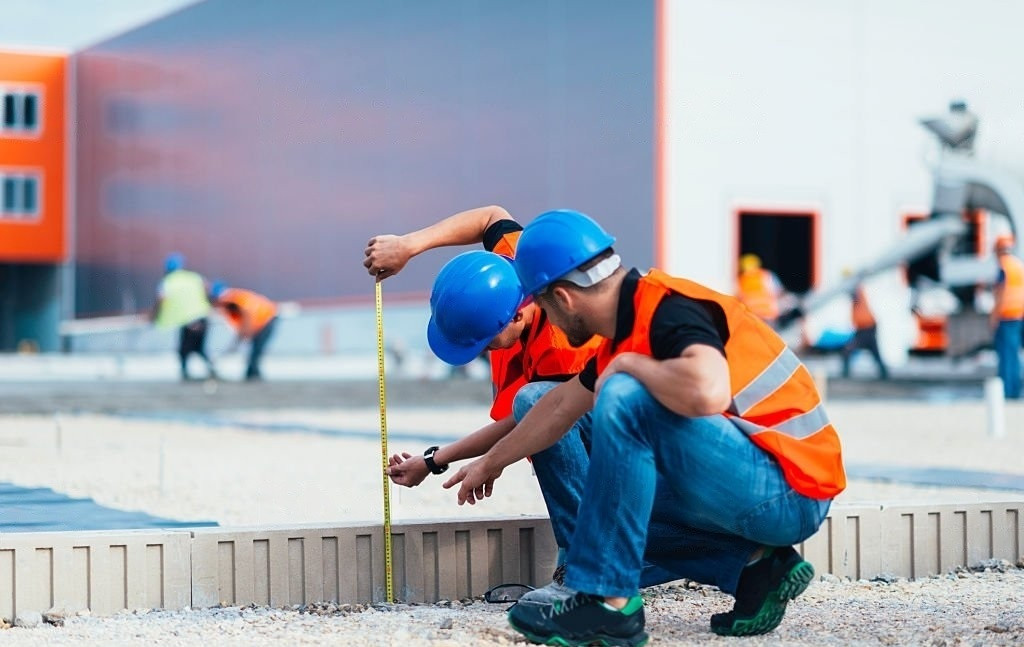 The service life of cellular concrete structures can reach 100 years with proper application and adherence to construction technology. The material has high resistance to various effects. Frankly speaking, it is one of the most durable lightweight building materials.
The service life of cellular concrete structures can reach 100 years with proper application and adherence to construction technology. The material has high resistance to various effects. Frankly speaking, it is one of the most durable lightweight building materials.
The thermal efficiency of cellular concrete is maintained throughout the building's service life. Unlike some synthetic thermal insulation materials that lose their properties over time, cellular concrete does not degrade under normal operating conditions.
The frost resistance of cellular concrete allows its use in regions with harsh climates. Autoclaved AAC withstands up to 100 freeze-thaw cycles without losing strength characteristics. This ensures the durability of structures even in extreme climatic conditions.
Fire resistance is another important property of cellular concrete. The material does not burn and withstands exposure to open flames for several hours, which increases the fire safety of buildings. Cellular concrete belongs to non-combustible materials of class A1 according to ASTM E136 and can be used for creating fire barriers.
Problems and Solutions When Using Cellular Concrete
Despite numerous advantages, certain problems can arise when working with cellular concrete. The most common is material shrinkage. As noted in the original material, shrinkage can lead to crack formation and deterioration of plaster coating adhesion.
During the construction of a cottage in Arizona, I encountered the problem of increased water absorption of AAC blocks. The solution was quality waterproofing and the use of special water-repellent plasters. Practical experience shows that most problems with cellular concrete arise due to violation of construction technology.
Main problems and solutions:
- Shrinkage – resolved by applying autoclaving technology or using expanding additives.
- High water absorption – requires thorough waterproofing and moisture protection.
- Low flexural strength – compensated by reinforcing the masonry and installing reinforced concrete belts.
- Brittleness – necessary to avoid point loads and evenly distribute the weight of structures.
- Waterproofing is required for cellular concrete to protect against moisture, especially when building on weak soils with a high groundwater level.
Modern cellular concrete production technologies allow minimizing these shortcomings. For example, adding quicklime and colloidal gypsum promotes the formation of a strong cement stone with an expansion effect, which compensates for shrinkage.
Applications of Cellular Concrete in Modern Construction
Cellular concrete, thanks to its unique properties, has found wide application in various areas of modern construction. Its use is especially effective in low-rise construction, where its advantages are fully realized.
When I worked on projects in Eastern Europe, I was impressed by the variety of applications for porous building materials. From private homes to industrial facilities – cellular concrete demonstrated its advantages everywhere.
Main areas of application:
- Construction of load-bearing walls for low-rise buildings (up to 3-5 floors).
- Erection of interior partitions and non-load-bearing walls.
- Thermal insulation of building structures.
- Filling frameworks of multi-story buildings.
- Manufacturing large-sized wall panels and lintels.
- Construction of agricultural and industrial buildings.
Depending on the density of cellular concrete, its area of application is determined. Thermal insulation cellular concrete (D200-D300) is used for insulation, structural-thermal insulation (D300-D600) – for erecting walls and partitions, structural (D600-D800) – for load-bearing constructions. Construction on weak soils especially benefits from the use of this lightweight material, reducing the load on the foundation.
Prospects for Cellular Concrete Technology Development
Technologies for the production and application of cellular concrete are constantly being improved. Research is directed at improving the physical and mechanical characteristics of the material and expanding the areas of its application in modern construction.
In 2024, I visited an international building materials exhibition where innovative developments in the field of cellular concrete were presented. I was impressed by samples of material with a density of just 12.5 lb/ft³ and yet with sufficient strength for use in construction. This is a real breakthrough!
Promising areas of development:
- Creating cellular concrete with improved thermal insulation properties (thermal conductivity coefficient less than 0.48 BTU·in/h·ft²·°F).
- Developing compositions with minimal shrinkage and increased strength for construction on weak soils.
- Integration of nanotechnologies to improve the structure and properties of the material.
- Automation of production and improvement of geometric dimension accuracy (to ±0.5 mm).
- Creation of composite materials based on cellular concrete.
According to analysts' forecasts, the cellular concrete market will grow by 5-7% annually over the next 5 years, indicating the high potential of the material and the growing interest in it from the construction industry. The cost of cellular concrete remains competitive, with an average annual price increase of no more than 3%, which is lower than inflation in most countries.
Conclusion
Cellular concrete is a versatile building material that successfully combines structural and thermal insulation properties. Its application in modern construction is due to a number of advantages: from economic benefits to environmental friendliness and energy efficiency. Is there another material that so harmoniously combines these qualities?
The use of AAC and foam concrete allows reducing construction time, lowering the costs of erection and subsequent operation of the building, and ensuring a comfortable microclimate in the rooms. At the same time, the material is quite simple to process, making it accessible to a wide range of developers.
Despite some limitations, such as the need for protection against moisture and relatively low flexural strength, cellular concrete remains one of the most promising materials for low-rise construction. Modern technologies make it possible to minimize these disadvantages and expand the areas of material application.
Overall, cellular concrete can confidently be called a material of the future, which already today helps create energy-efficient, environmentally friendly, and comfortable buildings at reasonable construction costs.
